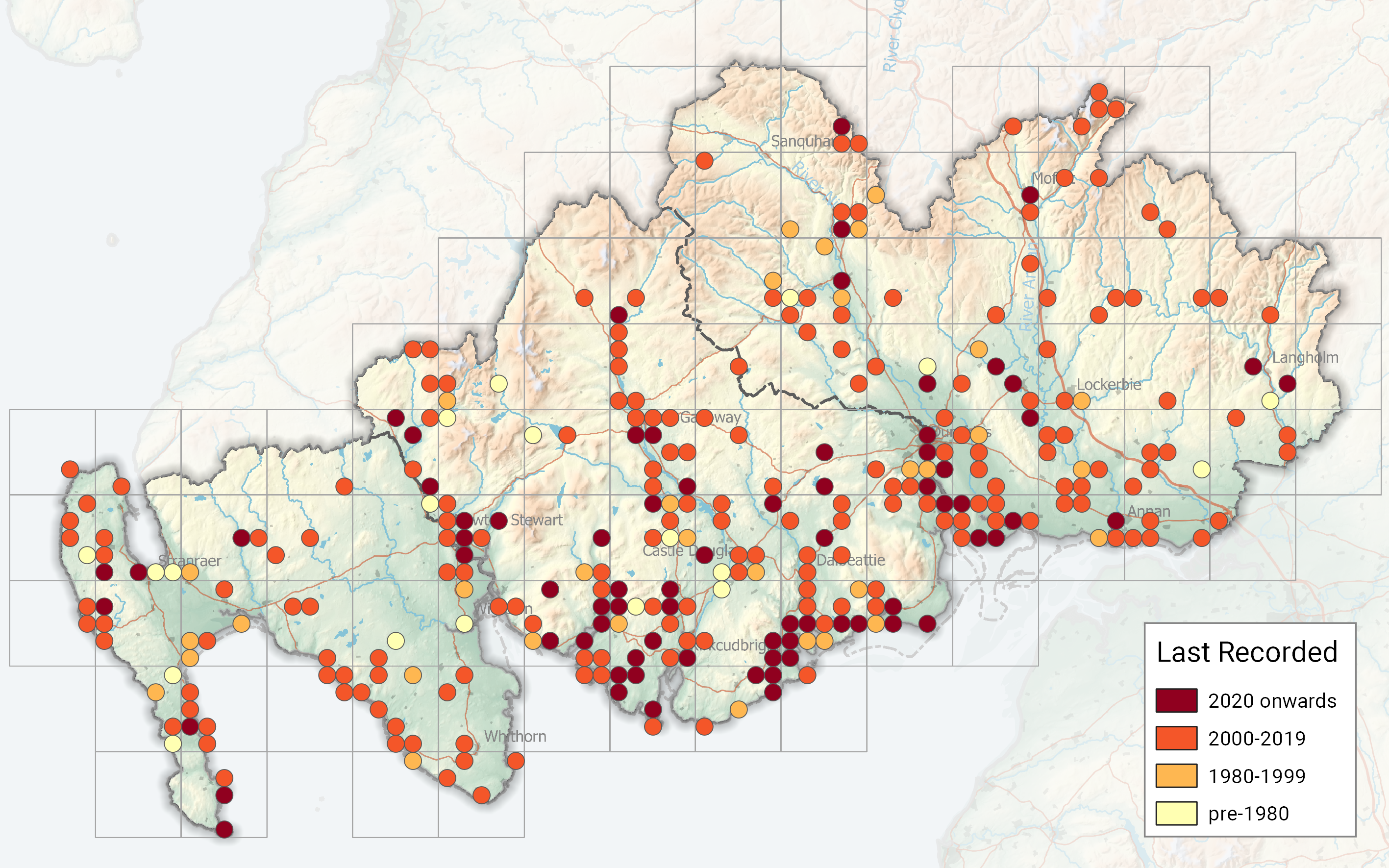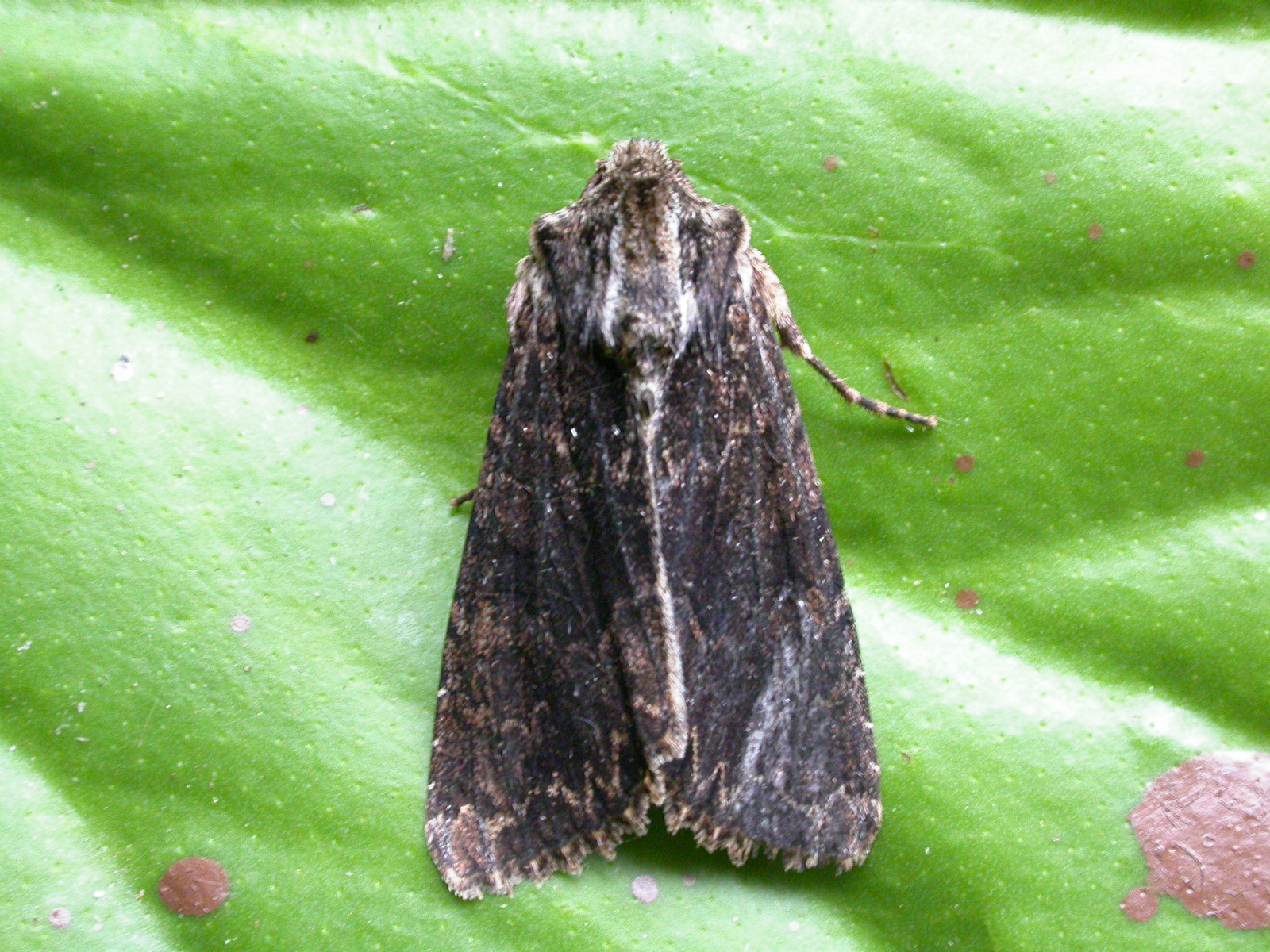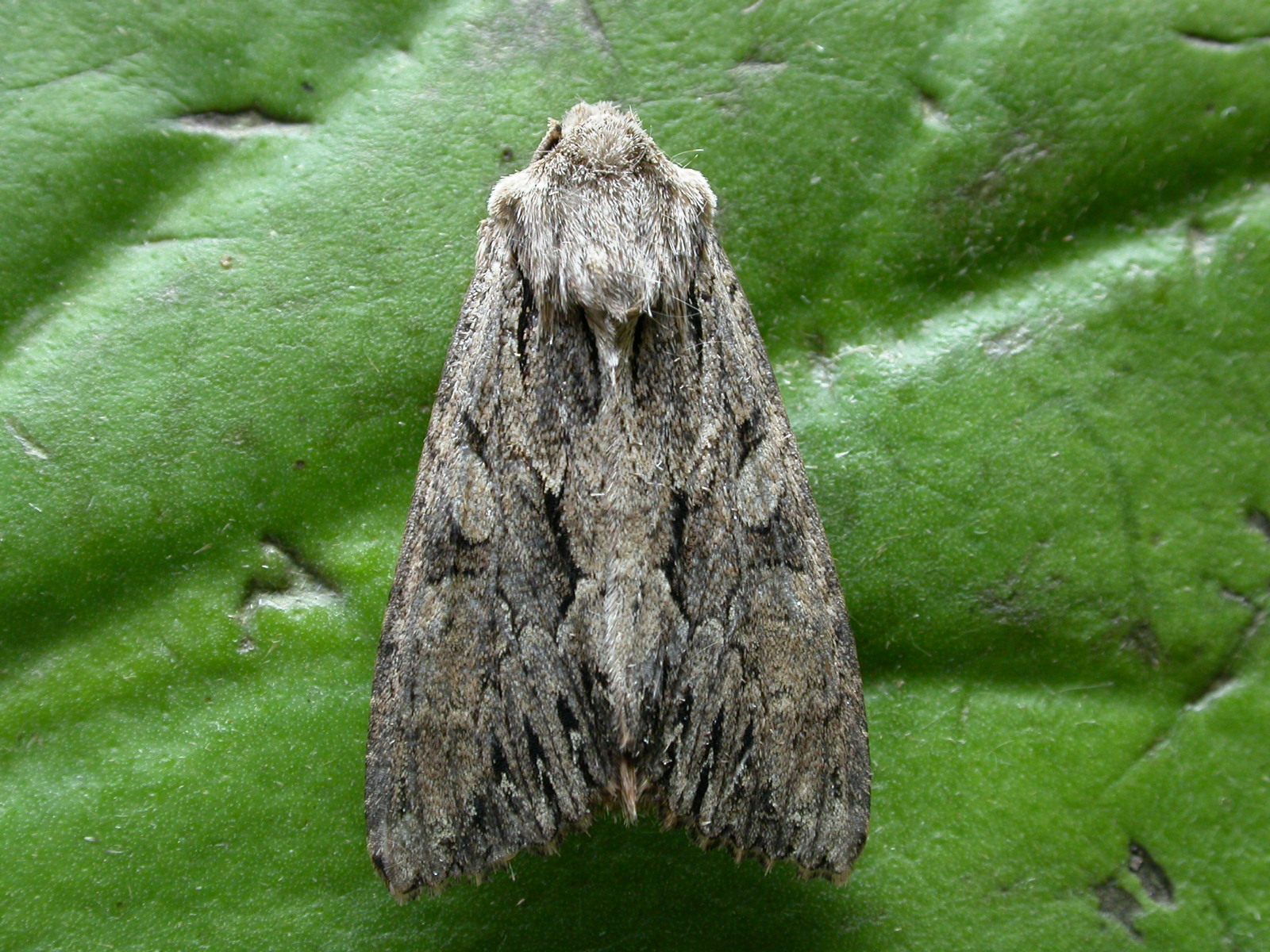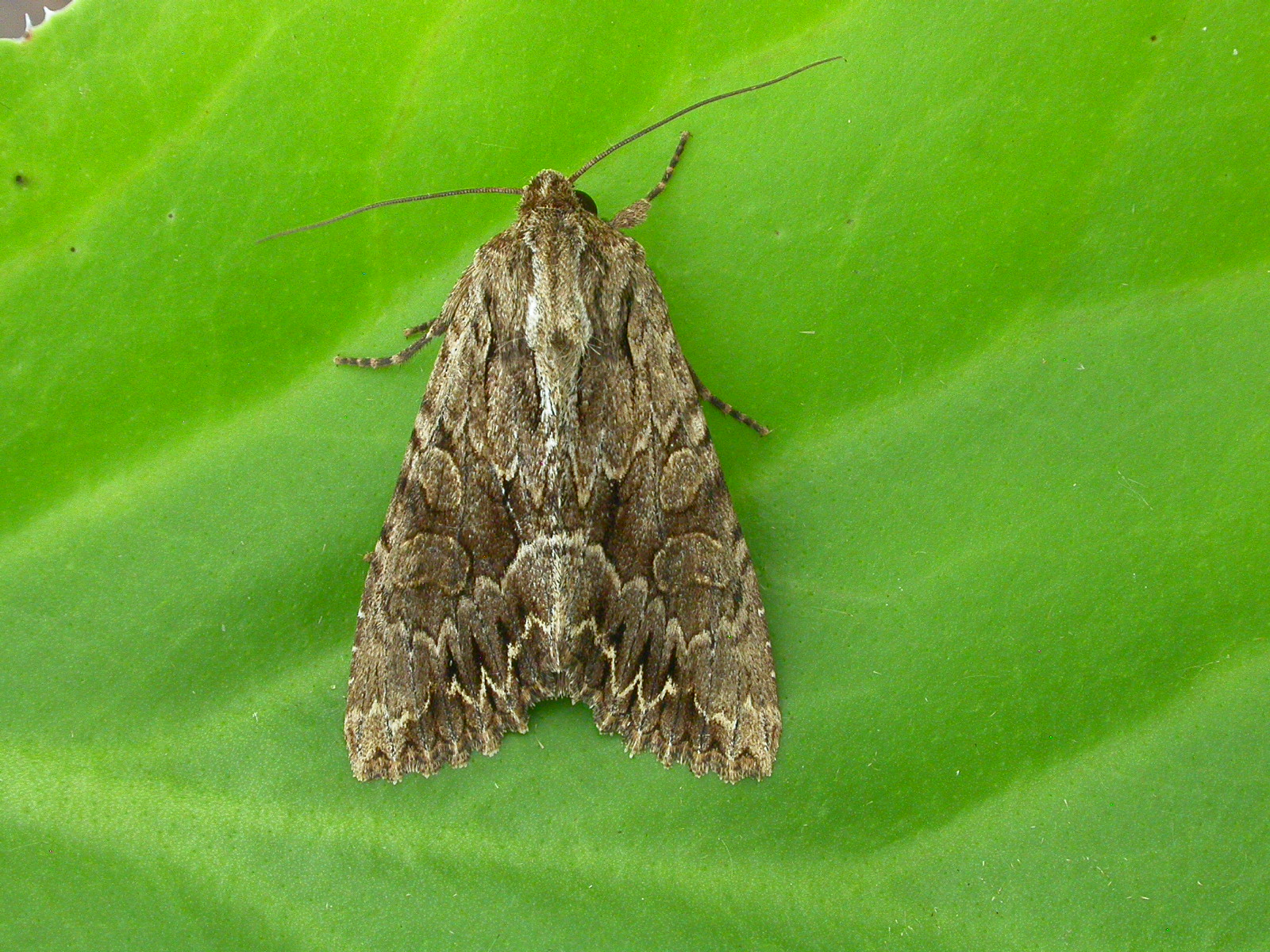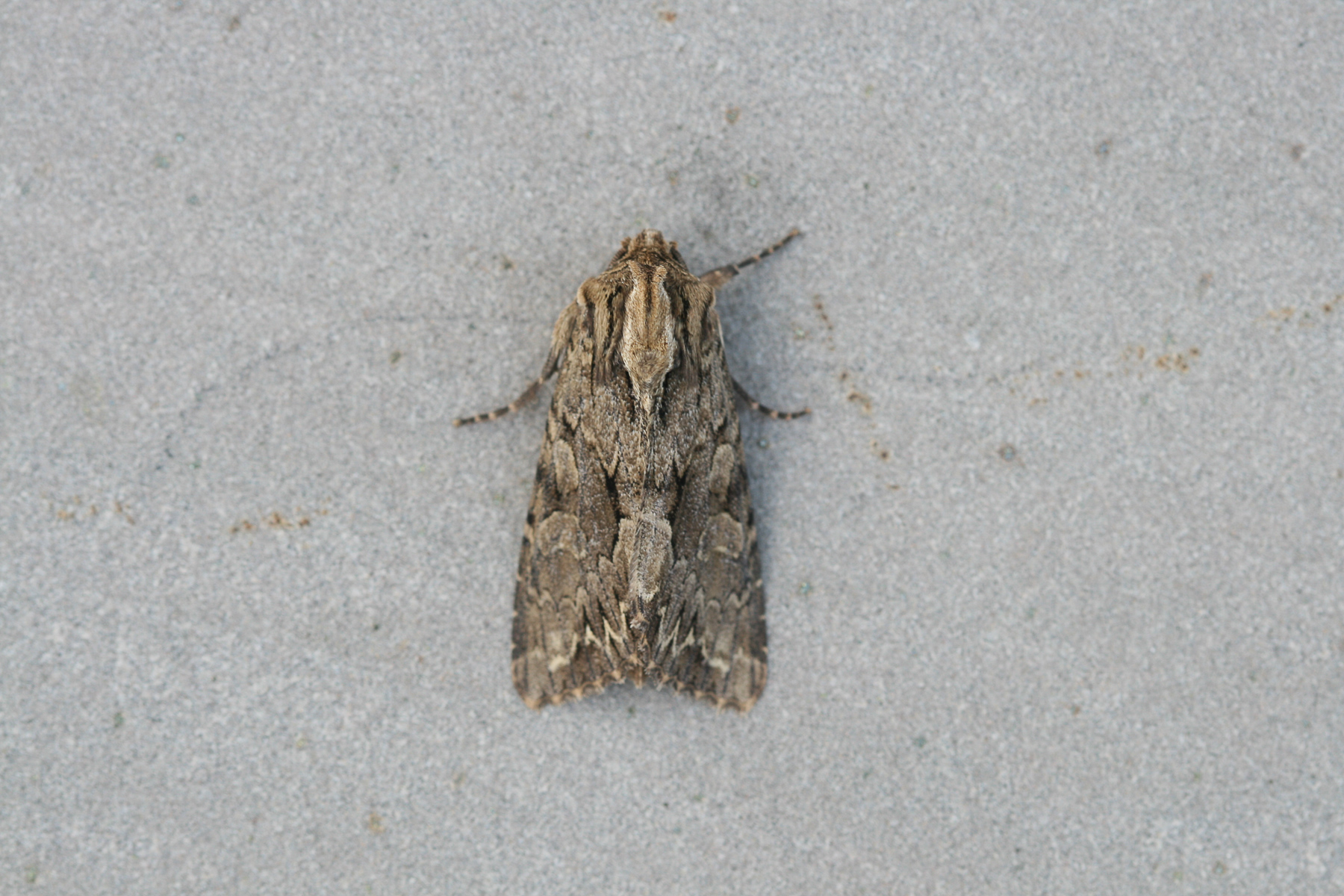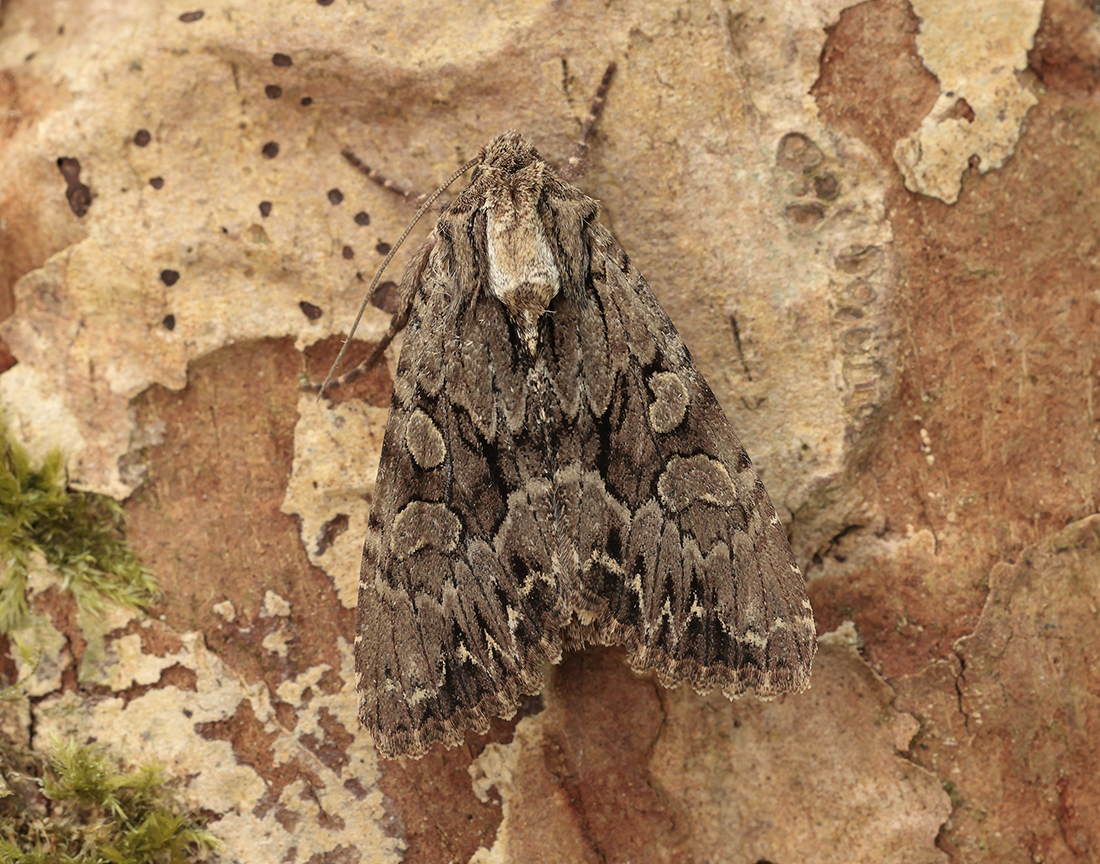Identification
Variable in colour, but distinctive.
Recording Method.
Attracted to light, often in numbers, also comes to sugar and flowers.
Life cycle
One generation. Overwinters as a larva among grass roots in a chamber, during August to June, with pupation underground.
Larval foodplants
Larvae feed on grasses, including Common Couch and Cock’s-foot.
Habitat
A wide range of habitats.
History
Lennon (1863) had found it common around the Dumfries area. Douglas Robinson (1870-71) had found it swarming all summer on Almorness (VC73) with several dark varieties; obviously, the form known as aethiops. K. J. Morton of Edinburgh (1900) whilst on a visit in July 1899 to Wigtownshire had found this species in the Monreith area. Gordon (1913) had found it abundant everywhere in Wigtownshire and variable in colour, form aethiops being plentiful. Earliest date was 13th June 1897. Evans (1915) during his research into migration at Scottish lighthouses received from D. A. Mowat, keeper at Killantringan Lighthouse, Wigtownshire, a total of 84 specimens, with 22 taken in a single night late July 1913 and 25 in July, 1914. One or two were of the black form aethiops.
Archibald Russell (1944) listed it as occurring near Gatehouse of Fleet (VC73) during the years 1942-43. Further records occurred from varied sites through the 1950s to early 1970s when the Rothamsted stations were set up. Data from them shows it to have been recorded at all seven stations up to 1993. From then until 2010 personal trapping has recorded it from widespread sites across the region and in good numbers, proving Dark Arches to be one of our commonest noctuid moths.
Form f.aethiops occurs regularly alongside the nominate form, even from Victorian times. One of the form f. infuscata was trapped at Low Cordorcan near Newton Stewart on 5th July 2014.

